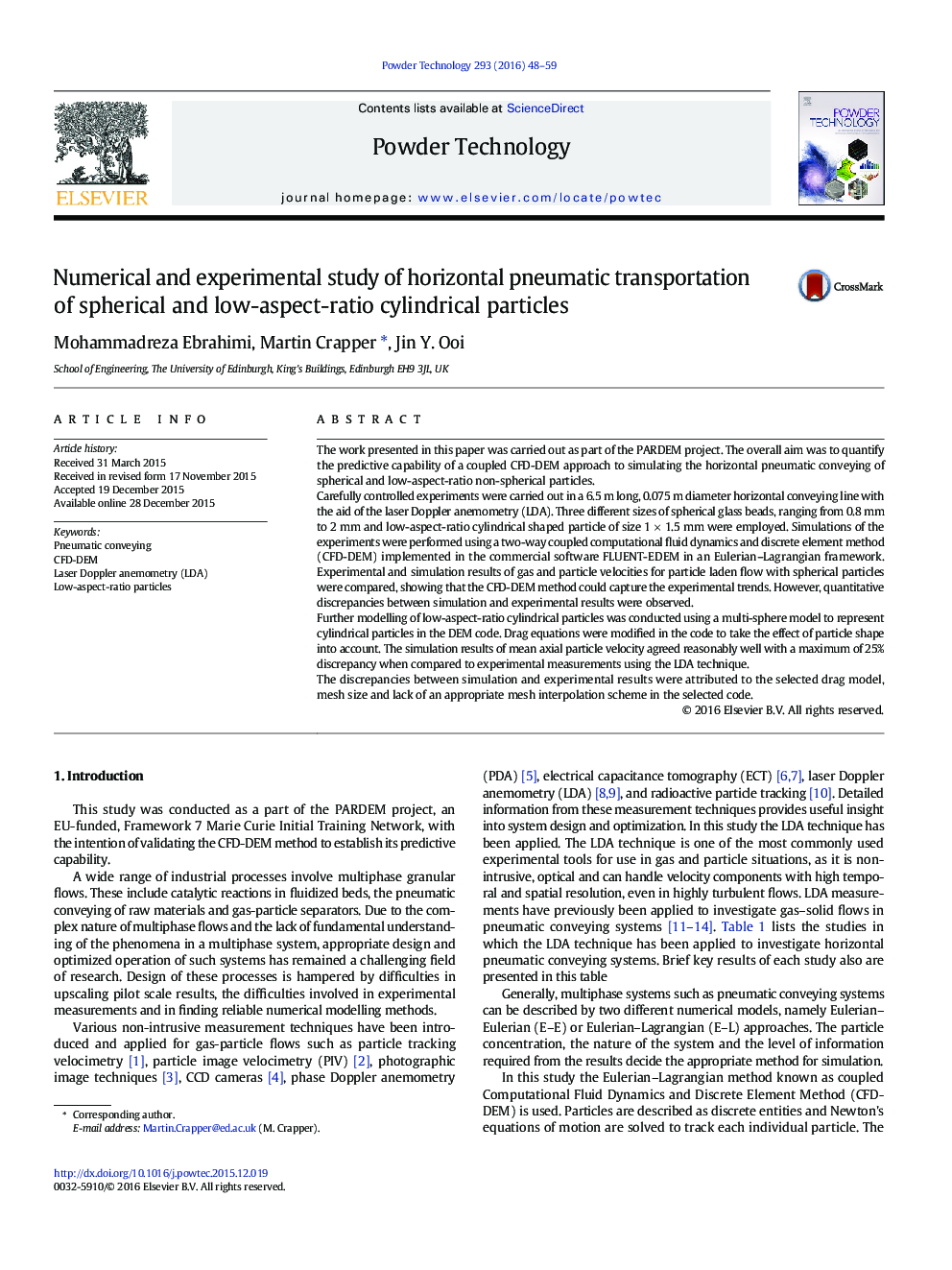| Article ID | Journal | Published Year | Pages | File Type |
|---|---|---|---|---|
| 234947 | Powder Technology | 2016 | 12 Pages |
•The CFD-DEM method could broadly capture the experimental trends.•Quantitative discrepancies between simulation and experimental result were observed.•A detailed experimental dataset was provided for horizontal pneumatic conveying.•Attention needs to be paid in selecting the appropriate drag model and mesh size.
The work presented in this paper was carried out as part of the PARDEM project. The overall aim was to quantify the predictive capability of a coupled CFD-DEM approach to simulating the horizontal pneumatic conveying of spherical and low-aspect-ratio non-spherical particles.Carefully controlled experiments were carried out in a 6.5 m long, 0.075 m diameter horizontal conveying line with the aid of the laser Doppler anemometry (LDA). Three different sizes of spherical glass beads, ranging from 0.8 mm to 2 mm and low-aspect-ratio cylindrical shaped particle of size 1 × 1.5 mm were employed. Simulations of the experiments were performed using a two-way coupled computational fluid dynamics and discrete element method (CFD-DEM) implemented in the commercial software FLUENT-EDEM in an Eulerian–Lagrangian framework. Experimental and simulation results of gas and particle velocities for particle laden flow with spherical particles were compared, showing that the CFD-DEM method could capture the experimental trends. However, quantitative discrepancies between simulation and experimental results were observed.Further modelling of low-aspect-ratio cylindrical particles was conducted using a multi-sphere model to represent cylindrical particles in the DEM code. Drag equations were modified in the code to take the effect of particle shape into account. The simulation results of mean axial particle velocity agreed reasonably well with a maximum of 25% discrepancy when compared to experimental measurements using the LDA technique.The discrepancies between simulation and experimental results were attributed to the selected drag model, mesh size and lack of an appropriate mesh interpolation scheme in the selected code.
Graphical abstractFigure optionsDownload full-size imageDownload as PowerPoint slide
